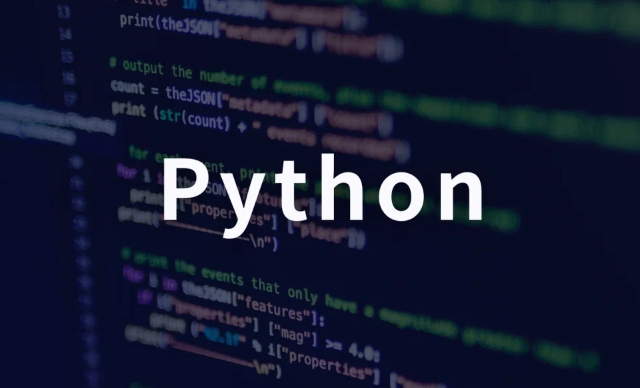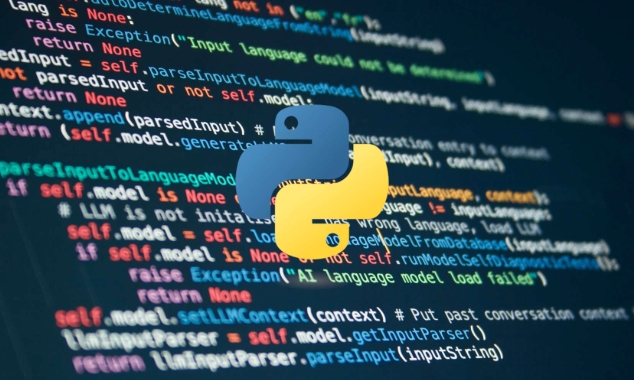 Backend Development
Backend Development
 Python Tutorial
Python Tutorial
 What are public, private, and protected attributes in Python?
What are public, private, and protected attributes in Python?
What are public, private, and protected attributes in Python?
Aug 01, 2025 am 06:50 AMPython uses naming conventions to indicate attribute access levels: 1. Public attributes (e.g., name) have no leading underscore and are accessible everywhere. 2. Protected attributes (e.g., _age) use a single leading underscore, indicating internal use and discouraging external access though still accessible. 3. Private attributes (e.g., __ssn) use double leading underscores, triggering name mangling (e.g., _Person__ssn) to prevent accidental access from outside or subclasses, though still technically accessible via the mangled name. These conventions guide developers on intended usage, with public for general access, protected for internal and inherited use, and private to avoid naming conflicts and hide implementation details, though Python does not enforce strict access control.

In Python, attributes (like variables or methods) in a class can be defined with different levels of access control. While Python doesn’t enforce strict access restrictions like some other languages (e.g., Java), it uses naming conventions to indicate whether an attribute should be treated as public, protected, or private. These conventions guide developers on how attributes should be accessed or inherited.

Here’s how they work:
? Public Attributes
Public attributes are the default in Python. They can be accessed from anywhere — inside the class, outside the class, and in subclasses.

- Naming: No leading underscore.
-
Example:
attribute,do_something()
class Person:
def __init__(self, name):
self.name = name # Public attribute
p = Person("Alice")
print(p.name) # Accessible — prints "Alice"? Use public attributes when data or methods are meant to be freely used.
? Protected Attributes
Protected attributes are intended for internal use within a class and its subclasses. They are not meant to be accessed directly from outside, but Python doesn’t prevent it — it’s more of a hint to other developers.

- Naming: Single leading underscore:
_attribute,_method() - Convention only — still accessible from outside.
class Person:
def __init__(self, age):
self._age = age # Protected attribute
p = Person(25)
print(p._age) # Works, but discouraged — "don't touch this" warning?? The single underscore tells other developers: "This is internal — use at your own risk."
Useful when you want to:
- Signal that an attribute is part of internal implementation.
- Allow subclasses to inherit and use it, but discourage direct access from external code.
? Private Attributes
Private attributes are meant to be used only within the defining class. Python uses name mangling to make them harder (but not impossible) to access from outside.
- Naming: Double leading underscore:
__attribute,__method() - Name mangling changes the name to
_ClassName__attribute
class Person:
def __init__(self, ssn):
self.__ssn = ssn # Private attribute
p = Person("123-45-6789")
# This will raise an AttributeError:
# print(p.__ssn) # ? Not directly accessible
# But this works (name mangling):
print(p._Person__ssn) # ? Prints "123-45-6789"? Purpose:
- Prevent accidental access or override in subclasses.
- Hide implementation details.
Note: It's still possible to access private attributes (as shown), so it's not truly private — just harder to access by accident.
Summary of Access Levels
| Type | Syntax | Accessible in Class | Accessible in Subclass | Accessible Outside |
|---|---|---|---|---|
| Public | name |
? Yes | ? Yes | ? Yes |
| Protected | _name |
? Yes | ? Yes | ? Yes (discouraged) |
| Private | __name |
? Yes | ? No (mangled) | ? Only via mangling |
A Few Tips
- Don’t overuse private attributes. In Python, "we're all consenting adults" — trust developers to use interfaces responsibly.
- Use
_single_leading_underscorefor internal helper methods/variables. - Use
__double_leading_underscoresparingly — mainly to avoid naming conflicts in inheritance. - If you really want to hide data, consider properties or closures instead.
Basically, these are conventions backed by mild mechanics (especially for private). They help organize code and communicate intent, even if they don’t lock things down completely.
The above is the detailed content of What are public, private, and protected attributes in Python?. For more information, please follow other related articles on the PHP Chinese website!

Hot AI Tools

Undress AI Tool
Undress images for free

Undresser.AI Undress
AI-powered app for creating realistic nude photos

AI Clothes Remover
Online AI tool for removing clothes from photos.

Clothoff.io
AI clothes remover

Video Face Swap
Swap faces in any video effortlessly with our completely free AI face swap tool!

Hot Article

Hot Tools

Notepad++7.3.1
Easy-to-use and free code editor

SublimeText3 Chinese version
Chinese version, very easy to use

Zend Studio 13.0.1
Powerful PHP integrated development environment

Dreamweaver CS6
Visual web development tools

SublimeText3 Mac version
God-level code editing software (SublimeText3)
 Polymorphism in python classes
Jul 05, 2025 am 02:58 AM
Polymorphism in python classes
Jul 05, 2025 am 02:58 AM
Polymorphism is a core concept in Python object-oriented programming, referring to "one interface, multiple implementations", allowing for unified processing of different types of objects. 1. Polymorphism is implemented through method rewriting. Subclasses can redefine parent class methods. For example, the spoke() method of Animal class has different implementations in Dog and Cat subclasses. 2. The practical uses of polymorphism include simplifying the code structure and enhancing scalability, such as calling the draw() method uniformly in the graphical drawing program, or handling the common behavior of different characters in game development. 3. Python implementation polymorphism needs to satisfy: the parent class defines a method, and the child class overrides the method, but does not require inheritance of the same parent class. As long as the object implements the same method, this is called the "duck type". 4. Things to note include the maintenance
 Explain Python generators and iterators.
Jul 05, 2025 am 02:55 AM
Explain Python generators and iterators.
Jul 05, 2025 am 02:55 AM
Iterators are objects that implement __iter__() and __next__() methods. The generator is a simplified version of iterators, which automatically implement these methods through the yield keyword. 1. The iterator returns an element every time he calls next() and throws a StopIteration exception when there are no more elements. 2. The generator uses function definition to generate data on demand, saving memory and supporting infinite sequences. 3. Use iterators when processing existing sets, use a generator when dynamically generating big data or lazy evaluation, such as loading line by line when reading large files. Note: Iterable objects such as lists are not iterators. They need to be recreated after the iterator reaches its end, and the generator can only traverse it once.
 How to handle API authentication in Python
Jul 13, 2025 am 02:22 AM
How to handle API authentication in Python
Jul 13, 2025 am 02:22 AM
The key to dealing with API authentication is to understand and use the authentication method correctly. 1. APIKey is the simplest authentication method, usually placed in the request header or URL parameters; 2. BasicAuth uses username and password for Base64 encoding transmission, which is suitable for internal systems; 3. OAuth2 needs to obtain the token first through client_id and client_secret, and then bring the BearerToken in the request header; 4. In order to deal with the token expiration, the token management class can be encapsulated and automatically refreshed the token; in short, selecting the appropriate method according to the document and safely storing the key information is the key.
 Explain Python assertions.
Jul 07, 2025 am 12:14 AM
Explain Python assertions.
Jul 07, 2025 am 12:14 AM
Assert is an assertion tool used in Python for debugging, and throws an AssertionError when the condition is not met. Its syntax is assert condition plus optional error information, which is suitable for internal logic verification such as parameter checking, status confirmation, etc., but cannot be used for security or user input checking, and should be used in conjunction with clear prompt information. It is only available for auxiliary debugging in the development stage rather than substituting exception handling.
 How to iterate over two lists at once Python
Jul 09, 2025 am 01:13 AM
How to iterate over two lists at once Python
Jul 09, 2025 am 01:13 AM
A common method to traverse two lists simultaneously in Python is to use the zip() function, which will pair multiple lists in order and be the shortest; if the list length is inconsistent, you can use itertools.zip_longest() to be the longest and fill in the missing values; combined with enumerate(), you can get the index at the same time. 1.zip() is concise and practical, suitable for paired data iteration; 2.zip_longest() can fill in the default value when dealing with inconsistent lengths; 3.enumerate(zip()) can obtain indexes during traversal, meeting the needs of a variety of complex scenarios.
 What are python iterators?
Jul 08, 2025 am 02:56 AM
What are python iterators?
Jul 08, 2025 am 02:56 AM
InPython,iteratorsareobjectsthatallowloopingthroughcollectionsbyimplementing__iter__()and__next__().1)Iteratorsworkviatheiteratorprotocol,using__iter__()toreturntheiteratorand__next__()toretrievethenextitemuntilStopIterationisraised.2)Aniterable(like
 What are Python type hints?
Jul 07, 2025 am 02:55 AM
What are Python type hints?
Jul 07, 2025 am 02:55 AM
TypehintsinPythonsolvetheproblemofambiguityandpotentialbugsindynamicallytypedcodebyallowingdeveloperstospecifyexpectedtypes.Theyenhancereadability,enableearlybugdetection,andimprovetoolingsupport.Typehintsareaddedusingacolon(:)forvariablesandparamete
 Python FastAPI tutorial
Jul 12, 2025 am 02:42 AM
Python FastAPI tutorial
Jul 12, 2025 am 02:42 AM
To create modern and efficient APIs using Python, FastAPI is recommended; it is based on standard Python type prompts and can automatically generate documents, with excellent performance. After installing FastAPI and ASGI server uvicorn, you can write interface code. By defining routes, writing processing functions, and returning data, APIs can be quickly built. FastAPI supports a variety of HTTP methods and provides automatically generated SwaggerUI and ReDoc documentation systems. URL parameters can be captured through path definition, while query parameters can be implemented by setting default values ??for function parameters. The rational use of Pydantic models can help improve development efficiency and accuracy.





